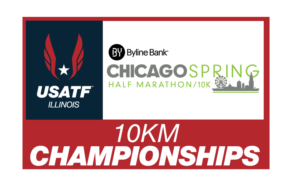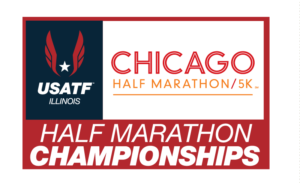Made In Chicago – Champions!
LIFE TIME PARTNERS WITH USATF – ILLINOIS TO BRING STATE CHAMPIONSHIPS TO CHICAGO
10K and Half Marathon State Championships Coming to Chicago
Chicago, IL (March 22) — The Byline Bank Chicago Spring Half Marathon & 10K, and Chicago Half Marathon & 5K produced by Life Time® Healthy Way of Life, are partnering with the USA Track & Field (USATF) – Illinois Association to host state champioinships. Together with Life Time, the nation’s premier healthy living, healthy aging and healthy entertainment brand, USATF – Illinois will be a driving force in providing a premier race experience for local developing athletes.
Set for Sunday, May 20, the Byline Bank Chicago Spring Half Marathon & 10K will host this years’ USATF – Illinois 10K Championship. While on Sunday, September 23, the Chicago Half Marathon & 5K will host the USATF – Illinois Half Marathon Championship.
“Life Time has grown the interest and demand for a quality race experience using an athlete first approach and including participants of all abilities” said Gregory Evans, Long Distance Running Chair for USATF – Illinois Association. “USATF Illinois is proud to bring the national governing body to the Chicago Spring Half Marathon & 10K and Chicago Half Marathon, adding another level of benefits to the participants and other race partners.”
“Partnering with USATF – Illinois is the next step as we continue to build on providing quality, premier race experiences for our athletes.” said Life Time Run Brand Manager, Dan Lakin, says of the USATF – Illinois partnership, “Life Time is dedicated to improving our local communities, and providing events that are best-in-class. Whether an elite athlete or a beginner, Life Time and USATF provide a vehicle to foster athletes at every level along their healthy way of life journey. We’re excited to to welcome the State Championships to Chicago at this years’ event and for years to come.”
An estimated 8,000 runners are expected to participate in this year’s Byline Bank Chicago Spring Half Marathon & 10K and another 13,000 are expected to take on the Chicago Half Marathon & 5K this September. In addition to age group and masters awards; each race will offer a prize purse to the top 3 men and women:
| 10K Championship | Half Marathon Championship | |
| 1st Place | $500 | $1,000 |
| 2nd Place | $250 | $500 |
| 3rd Place | $250 | $500 |
To place in a championship race, registered participants must be a current member of USATF at the time of the race. Information on USATF membership and it’s benefits may be found at USATF.org
About the Byline Bank Chicago Spring Half Marathon & 10K
The Byline Bank Chicago Spring Half Marathon & 10K, in its 10th year, benefits the Muscular Dystrophy Association. Participants will run either 13.1 miles or 10K (6.1 miles) starting along famed Grant Park traversing South along Columbus Drive, and run through Museum Campus and along Chicago’s beautiful lakefront before finishing in Maggie Daley Park. In its inaugural year, 1900 people signed up for the race, today it is one of the most in-demand racecs in Chicago selling out at just over 8,000 participants.
More information is available at ChicagoSpringHalf.com.
About the Chicago Half Marathon & 5K
The Chicago Half Marathon & 5K, in it’s 22nd year, highlights Chicago’s south shore. Stepping off from historic Jackson Park, participants traverse through Hyde Park before navigating along a traffic-free Lake Shore Drive. The Chicago Half Marathon is a flat and fast course offering up stunning views of Chicago’s famed skyline and a triumphant finish at the foot of the “Golden Lady” (Statue of the Republic).
More information at chicagohalfmarathon.com
Both races are part of the Chicagoland Half Marathon Series which includes the Byline Bank Chicago Spring Half Marathon & 10K (May 20) and the Chicago Half Marathon & 5K (September 23) and awards participants for completing 2 half marathons within the same year.
About Life Time®, Healthy Way of Life
Life Time champions a healthy and happy life for its members across 131 destinations in 37 major markets in the U.S. and Canada. As the nation’s only Healthy Way of Life brand, Life Time delivers an unmatched athletic resort experience and provides a comprehensive healthy living, healthy aging and healthy entertainment experience that goes well beyond fitness to encompasses the entire spectrum of daily life for individuals, couples and families of all ages. For more information visit lifetime.life.
About USATF – Illinois
USATF – Illinois seeks to promote the sport and its local athletes across the state, and is one of 57 USATF Associations across the country. Visit illinois.usatf.org for more information.
Based in Indianapolis, USA Track & Field (USATF) is the National Governing Body for track & field, long-distance running and race walking in the United States. USATF encompasses the world’s oldest organized sports, the most-watched events of Olympic broadcasts, the No. 1 high school and junior high school participatory sport and more than 30 million adult runners in the United States. Information on USATF membership and it’s benefits may be found at USATF.org
